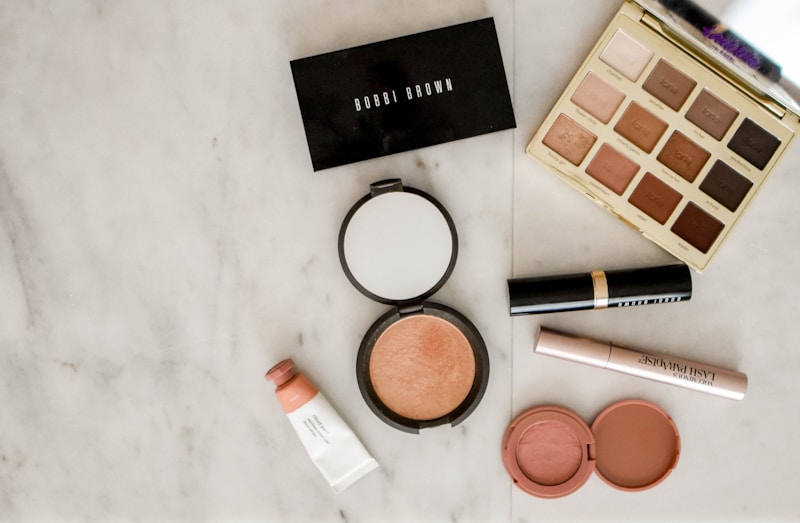Balancing Bold and Subtle Beauty Elements: The Art of Harmonious Design
Balancing Bold and Subtle Beauty Elements: The Art of Harmonious Design
Introduction to Bold and Subtle Beauty Elements
In the world of design, especially in beauty and aesthetics, achieving the perfect balance between bold and subtle elements is essential. This balance can influence a viewer’s perception and emotional response to a piece. Understanding how to use these elements effectively can elevate your work and create memorable experiences for your audience.
Understanding Bold and Subtle Beauty Elements
Bold elements are striking and often demand attention. They can include vibrant colors, dramatic shapes, and eye-catching patterns. On the other hand, subtle elements are more understated, featuring softer colors, delicate textures, and minimalistic designs. The harmony created by balancing these two types of beauty elements can significantly impact overall design effectiveness.
Examples of Bold Elements
| Element | Description |
| Vibrant Colors | Colors that pop and draw immediate attention, often used to create focal points. |
| Textured Surfaces | Highly tactile materials that create a sensory experience and visual interest. |
| Dramatic Shapes | Distinctive shapes that stand out and create strong visual impact. |
Examples of Subtle Elements
| Element | Description |
| Soft Color Palettes | Muted tones that provide a calming effect and allow other elements to shine. |
| Minimal Textures | Subtle textures that enhance visual depth without overwhelming the design. |
| Clean Lines | Straight or gently curved lines that lead the eye smoothly through a composition. |

The Importance of Balance in Design
Balanced design has a psychological impact on audiences. When viewers are exposed to harmonious visuals, they are more likely to engage positively with the content. Designers must consider how bold elements can dominate a space while subtle components can offer relief and context. A perfect blend provides a compelling visual narrative that invites exploration.
Strategic Application of Bold and Subtle Elements
To successfully incorporate bold and subtle elements into your designs, consider the following strategies:
- Define Your Goals: Understand what you want to achieve with your design. Are you trying to evoke excitement, calmness, or elegance?
- Choose a Focal Point: Identify which element will be the focal point and build your balance around it.
- Use Contrast Wisely: Contrasting colors or shapes can highlight both bold and subtle elements, creating a dynamic composition.
- Consider the Context: Ask yourself how your audience will interact with the design. Tailor your elements to fit the intended environment or platform.
Case Studies: Successful Balance in Design
To underscore the principles discussed, let's explore some successful case studies where designers skillfully balanced bold and subtle beauty elements:
Case Study 1: Fashion Design
In the realm of fashion, designers often navigate the spectrum of bold and subtle. A renowned fashion brand recently launched a collection combining vibrant, patterned fabrics with understated silhouettes. The results were striking: the bold prints captivated attention, while the subtle lines ensured the overall look remained sophisticated.
Case Study 2: Interior Design
An interior design firm balanced bold wall art with a minimalistic approach to furniture selection. The bold artwork served as focal points in each room, while soft, neutral-colored furniture and decor created a relaxing atmosphere. This approach enhanced the livability of the spaces while still making powerful visual statements.
Common Challenges in Balancing Beauty Elements
While balancing bold and subtle beauty elements can create stunning results, there are challenges designers often face:
- Overcomplicating Designs: One risk is adding too many bold elements, which can overwhelm the viewer.
- Neglecting Detail: Subtle elements are crucial. Neglecting them can lead to lackluster designs lacking depth.
- Audience Misalignment: A design that feels cohesive to one demographic may not resonate with another demographic.
Tips for Achieving the Perfect Balance
To navigate these challenges, embrace these tips when working on your designs:
- Test and Iterate: Create mock-ups and gather feedback to see how viewers interact with your elements. This testing phase is crucial in refining your balance.
- Limit Your Palette: Fewer colors can lead to a more cohesive design. Choose a color scheme that supports both bold and subtle elements.
- Embrace White Space: Allowing for blank space can help emphasize both bold and subtle elements, preventing overcrowding.
Conclusion
In conclusion, balancing bold and subtle beauty elements is not just a design choice; it's an art form that requires thoughtful consideration and execution. By understanding the characteristics of bold and subtle elements, applying strategic techniques, and learning from case studies, designers can create compelling artwork that resonates with audiences. Remember to be mindful of potential challenges and apply suggested tips for achieving harmony in your designs. The ultimate goal is to engage your audience through a visually enjoyable experience, creating lasting impressions that encourage interaction.
As you move forward in your design endeavors, strive to find the sweet spot where bold and subtle can coexist beautifully. This will not only uphold your creative vision but also elevate the viewer’s experience to new heights.
